One thing that always has to be present in a project for me is a deep, strong connection to the topic or concept.
I can’t commit to make work for a year, two, five or even longer on a whim or fad. It can’t be because it’s "cool" or looks good in (fill in the blank) process. It has to be deliberate, focused, challenging, interesting, and it has to be something that will make the viewer think.
I've found that over the last 30 years, I’ve always made images about my heritage, memory, history, or identity. I’ve not always been aware that’s I was doing, but age and maturity have allowed me to look back and see this clearly.
During graduate school (Goddard College 2005 - 2007), I had my DNA tested. I had both my mother’s (mitochondrial) and my father’s (Y) tested. The results revealed what I thought they would, my father’s Jewish and my mother’s Native America (Navajo from the Ket people).
My photographic/art career has centered on photographing “otherness”. I’ve been preoccupied with people and ideas outside of the mainstream. I explored this in my project, “Portraits from Madison Avenue” (2003 – 2006) and in “Vergangenheitsbewältigung (struggling to come to terms with the past)” (2006 – 2011) a project I made in Europe centered on my Jewish heritage and the events in Nazi Germany.
What I haven’t explored is the Native American side of my heritage. In 2011, I moved from Europe to Colorado with this in mind.
When I was eight or nine years old, I went into my parent’s room one day after school to use the restroom. The other restrooms in the house were occupied. When I came out, I noticed a book on my father’s nightstand. I picked it up and read the title, “Bury My Heart at Wounded Knee” by Dee Brown. I started looking through it and saw the photos. One of them was a photo of Big Foot frozen in the snow. It shocked me and piqued my interest. I started reading about what happened. Big Foot frozen in the snow after the massacre.
Big Foot frozen in the snow after the massacre.
One hundred and twenty-three winters ago, on December 29, 1890, some 150 Lakota men, women and children were massacred by the US 7th Calvary Regiment near Wounded Knee Creek on the Pine Ridge Indian Reservation. Some estimate the actual number closer to 300.
"It was the fourth day after Christmas in the Year of Our Lord 1890. When the first torn and bleeding bodies were carried into the candlelit church, those who were conscious could see Christmas greenery hanging from the open rafters. Across the chancel front above the pulpit was strung a crudely lettered banner: "Peace on earth, good will to men," writes Dee Brown in "Bury My Heart at Wounded Knee."
It was confusing to me. I didn’t understand all of it and I wanted to know why this happened. I asked my mother why the US forces attacked Indians when they weren’t doing anything wrong. I wanted to know why that happened. She simply said so they could take the land and resources (horses, supplies, etc.) and to get rid of the Native Americans. I read as much of the book I could. I didn’t fully understand, but I understood enough to know that something terrible happened to the Lakota that cold, awful day in December.
“I did not know then how much was ended. When I look back now from this high hill of my old age, I can still see the butchered women and children lying heaped and scattered all along the crooked gulch as plain as when I saw them with eyes still young. And I can see that something else died there in the bloody mud, and was buried in the blizzard. A people's dream died there. It was a beautiful dream . . . . the nation's hope is broken and scattered. There is no center any longer, and the sacred tree is dead.”
Black Elk
 The Hotchkiss cannon that was used in the genocide of the Lakota men, women and children.Not only was this early experience a shadow of what was to come for me and my interests, it created a longing in me for justice and truth. I remember feeling helpless and filled with anger and anxiety about this event. It was a seed planted, and now, 40 years later; it’s going to sprout.
The Hotchkiss cannon that was used in the genocide of the Lakota men, women and children.Not only was this early experience a shadow of what was to come for me and my interests, it created a longing in me for justice and truth. I remember feeling helpless and filled with anger and anxiety about this event. It was a seed planted, and now, 40 years later; it’s going to sprout.
When I was in undergraduate school (Weber State University; 1989 – 1993), I met Drex Brooks. Drex was in charge of the photography department at Weber State University. I respected Drex, I liked his work and admired his philosophy about photography. We worked together for over three years. Drex influenced my work and he influenced my philosophy about life, too. People would often ask if we were related. In the late 1980s through the early 1990s, Drex created a body of work about Native American massacre sites. His book was published in 1995 by the University of New Mexcio press, it’s called, “Sweet Medicine”. This book had a big impact on me. Through his teaching and his work, Drex taught me how to make serious artwork and what’s important about being an artist/photographer.
I’ve had almost a year to think about a new project. It’s been a rollercoaster in ways, but a very needed respite from image making (for a project). My show, “The American West Portraits”, ended last June in Paris, France. Since then, I’ve been contemplating what’s most important to me and what would have the most meaning to me in terms of impact. This is what I have decided to do; I’m going to follow in the footsteps of Drex (at least to some extent) and make wet/dry Collodion images of Native American massacre sites, places where treaties were signed and where “battles” took place with the Wasi'chu (non-Natives/white people) in the Western United States.
In a few weeks, I’ll have some examples from the Sand Creek Massacre site (1864), Colorado, the Council Grounds and Fort Laramie (site of a treaty signing in 1868) in Wyoming and the Summit Springs Battlefield in Logan County, Colorado (1869).
 My mother before she died. These are 5"x7" Black Glass Ambrotypes 2005
My mother before she died. These are 5"x7" Black Glass Ambrotypes 2005
 Monday, April 15, 2013 at 13:34
Monday, April 15, 2013 at 13:34 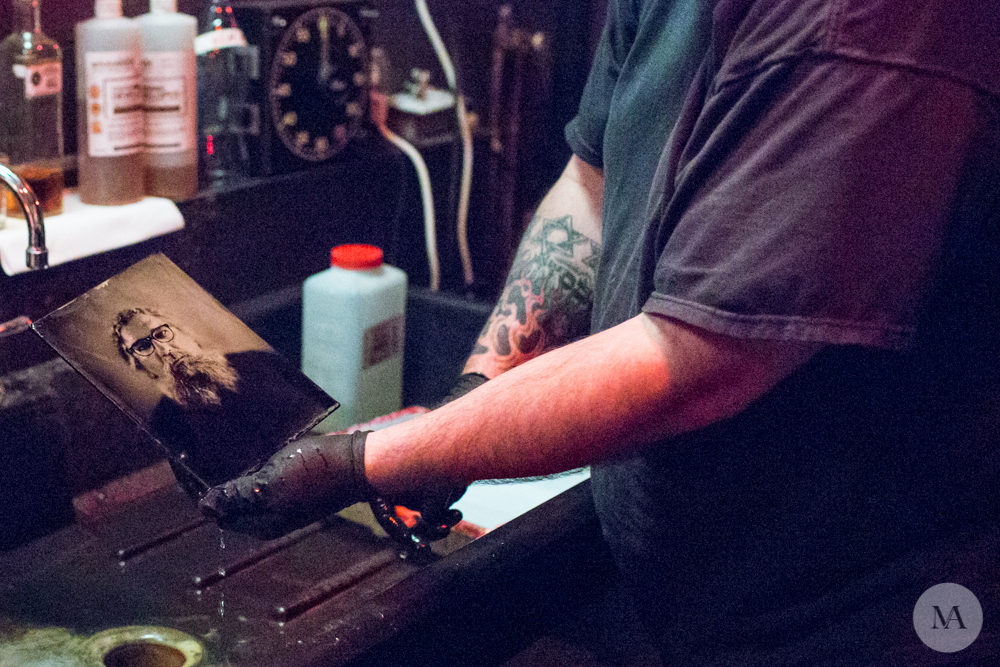 When you make negatives, you always start with a positive. Black Glass Ambrotype of Euphus.
When you make negatives, you always start with a positive. Black Glass Ambrotype of Euphus. 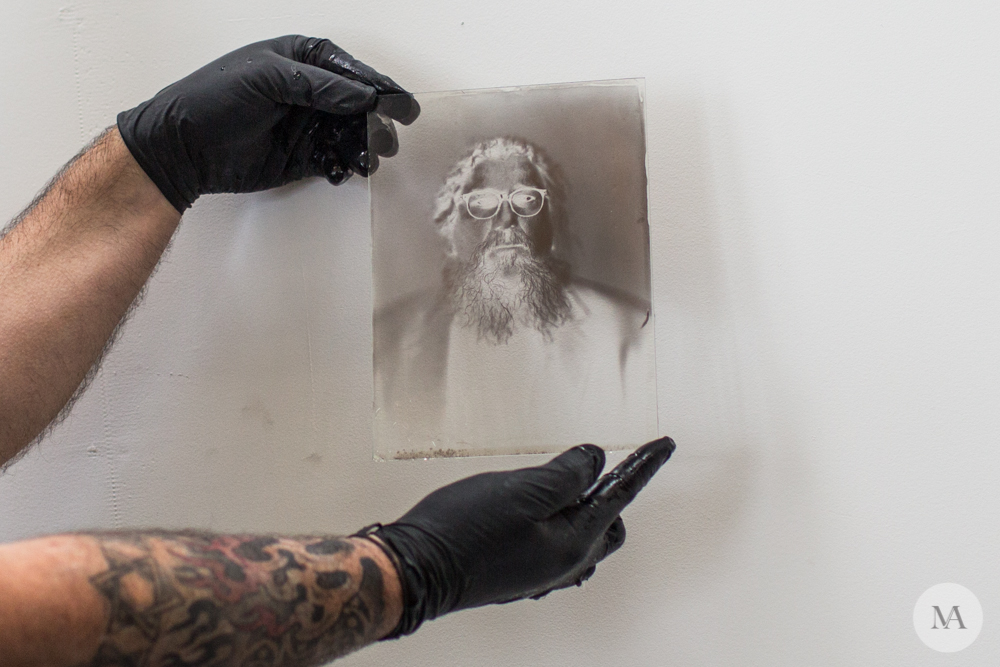 The "Euphus Negative" after redeveloping.
The "Euphus Negative" after redeveloping.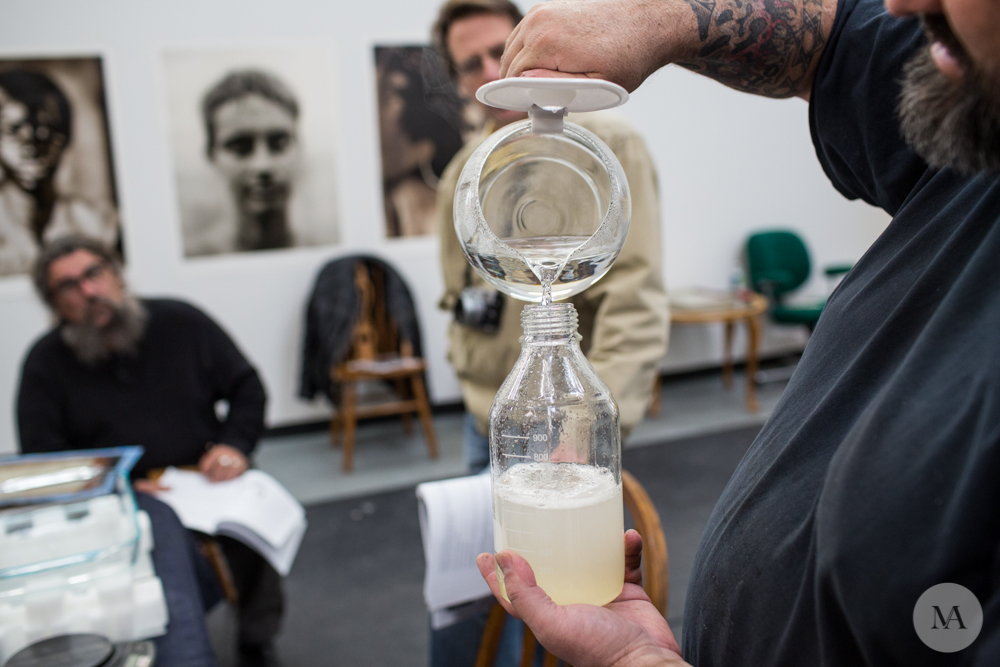 Hot water being poured into the sizing and salt for Salt paper
Hot water being poured into the sizing and salt for Salt paper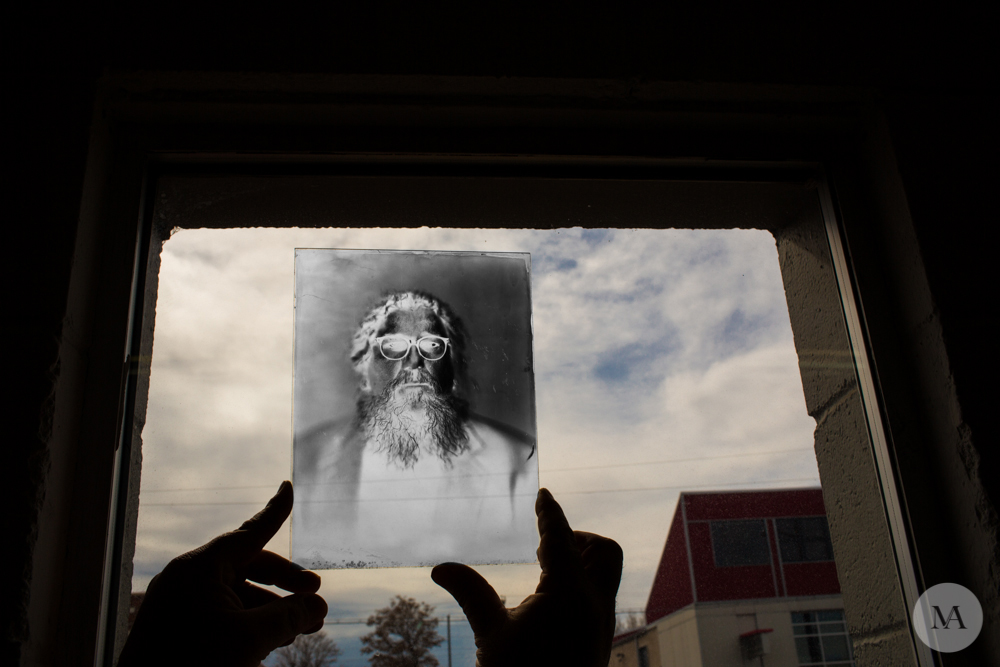 A good look at a redeveloped negative.
A good look at a redeveloped negative. 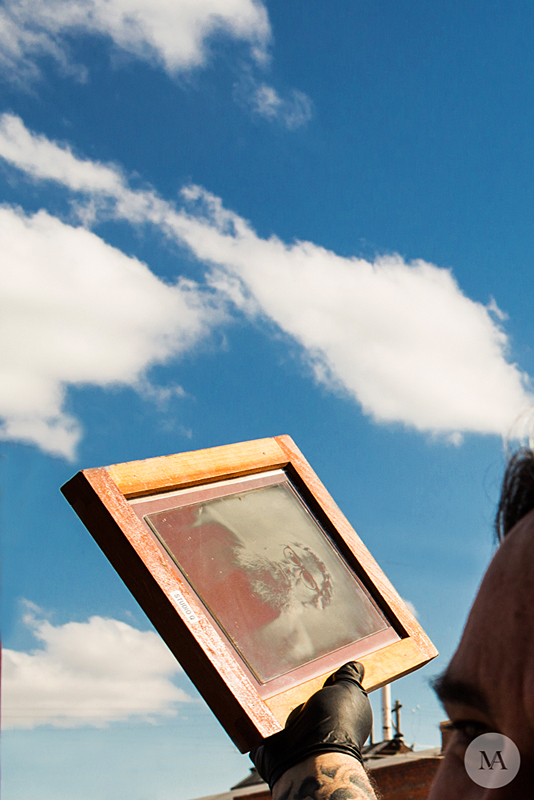 Printing Euphus out on some Salt paper.
Printing Euphus out on some Salt paper.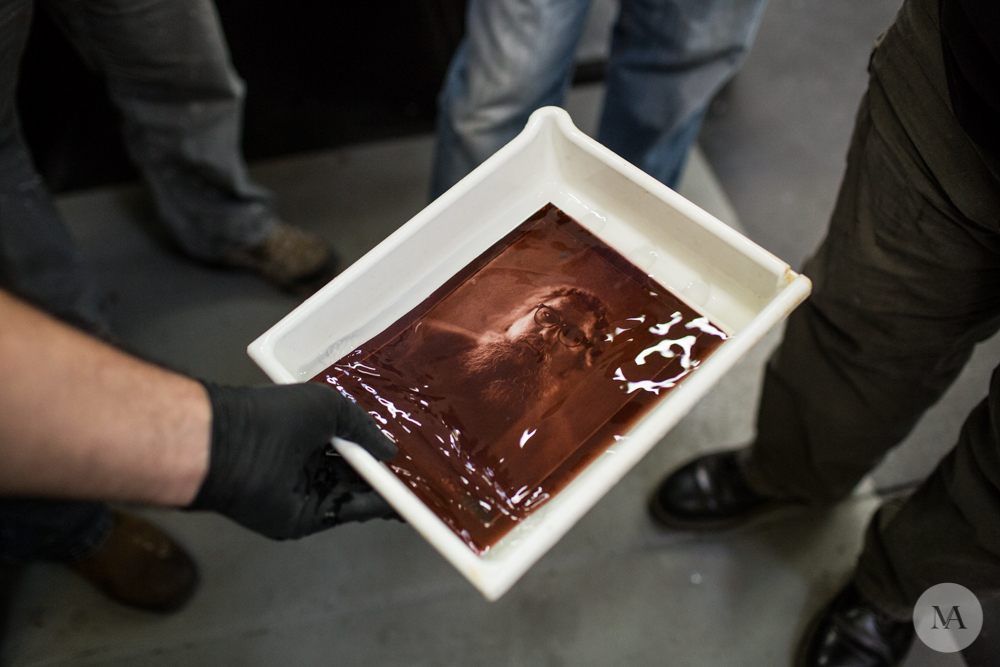 Euphus printed out on Salt paper.
Euphus printed out on Salt paper.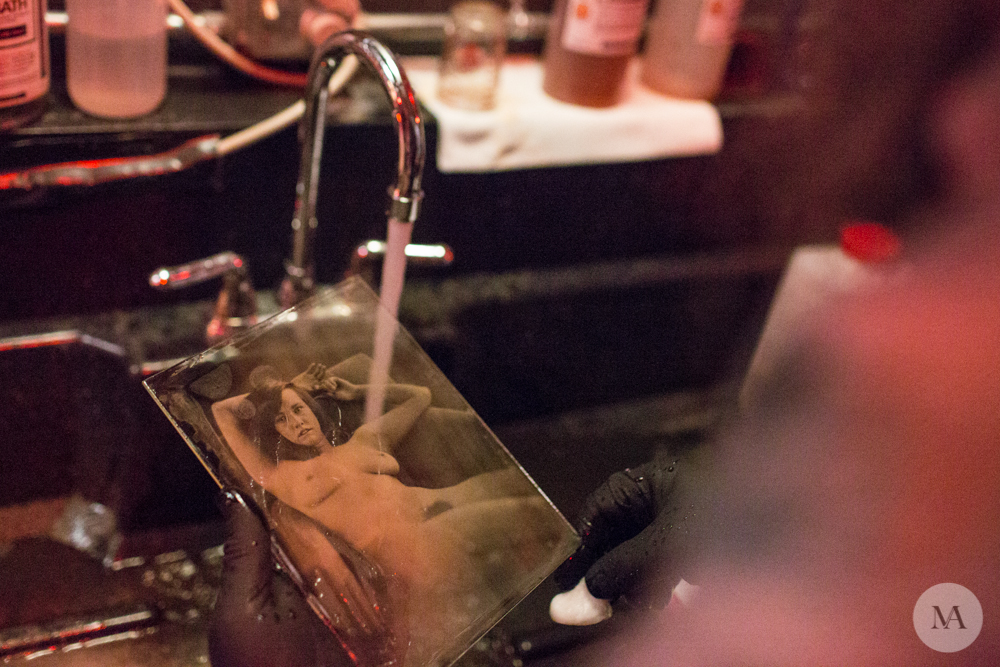 One of Euphus' first negatives of the day.
One of Euphus' first negatives of the day.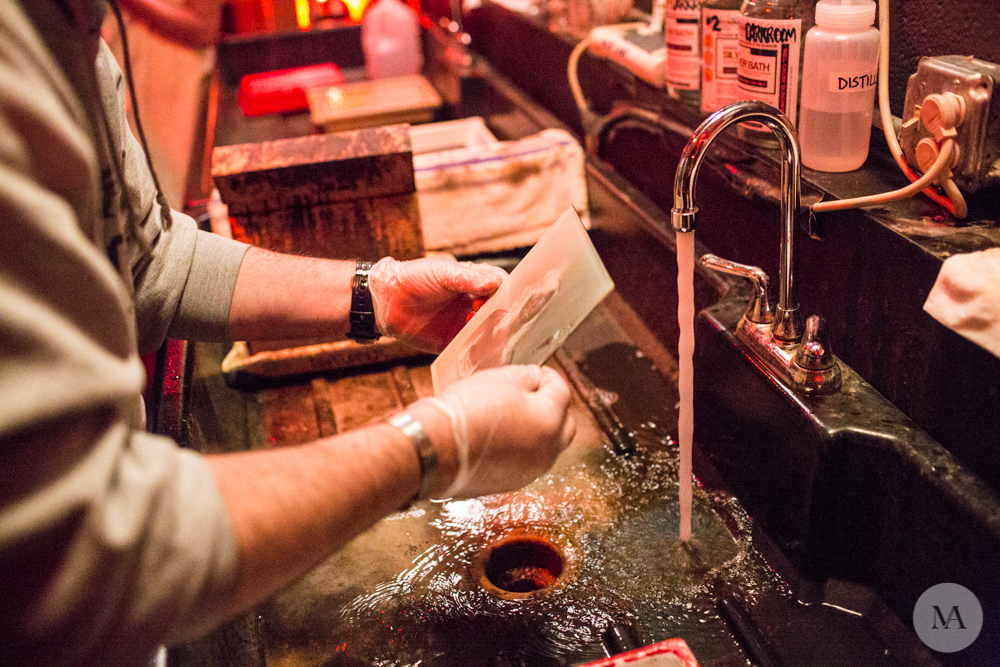 Kevin inspects one of his negatives.
Kevin inspects one of his negatives.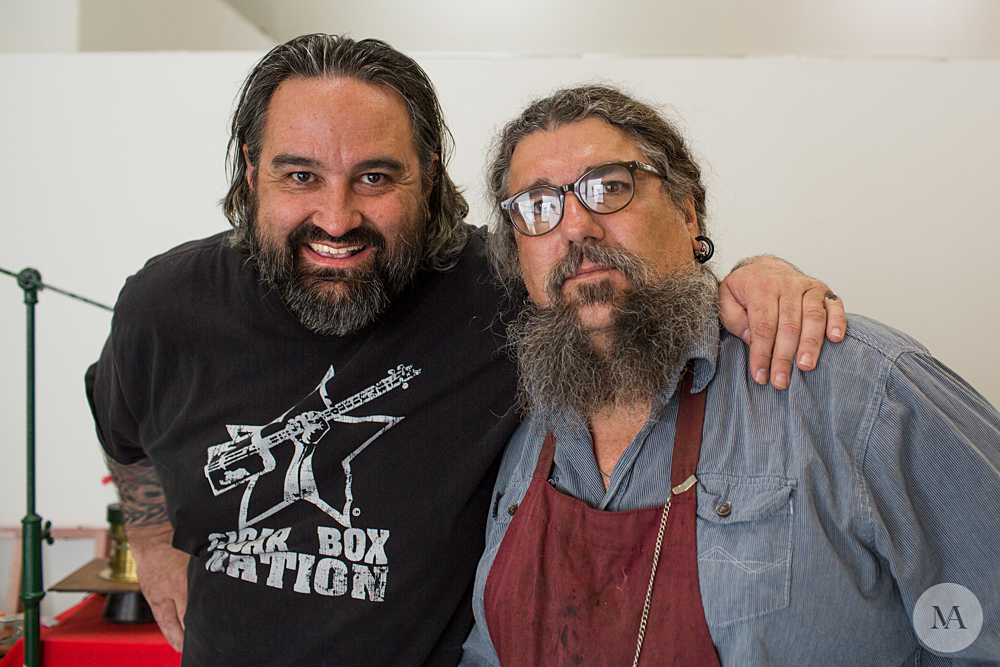 The "Cat Daddy" and Euphus ;-)
The "Cat Daddy" and Euphus ;-) 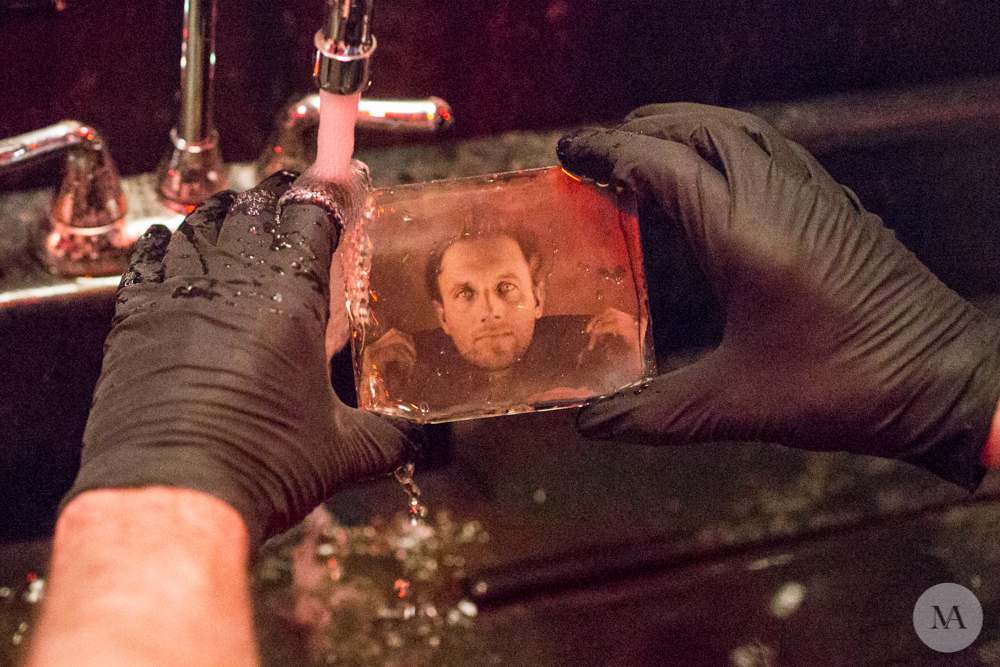 This is a portrait that Craig made of Matt - a wonderful image!
This is a portrait that Craig made of Matt - a wonderful image!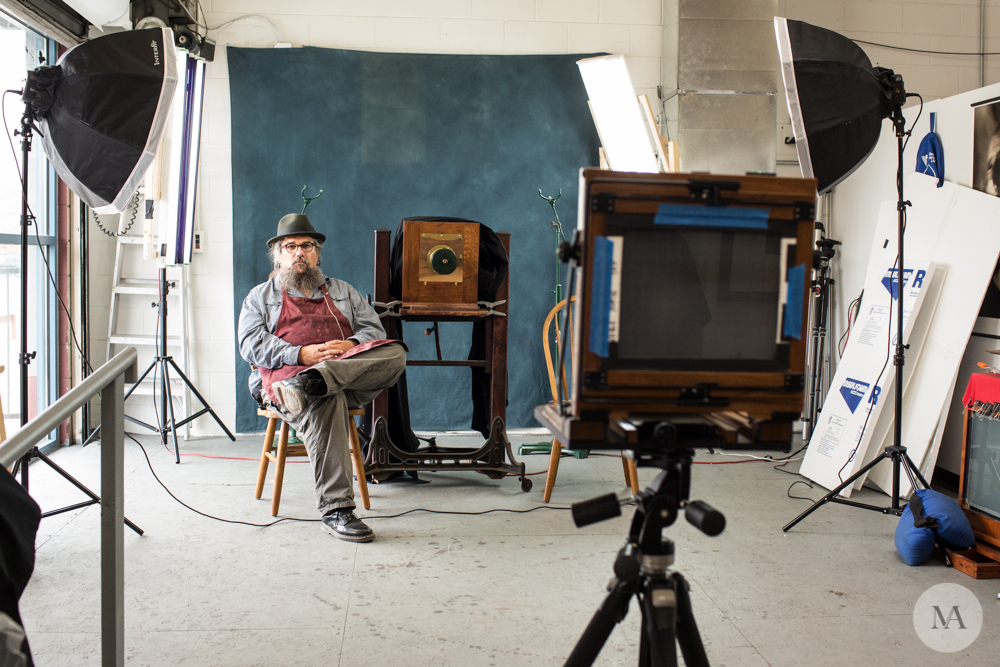 Euphus was ready for the group portrait before everyone else.
Euphus was ready for the group portrait before everyone else. 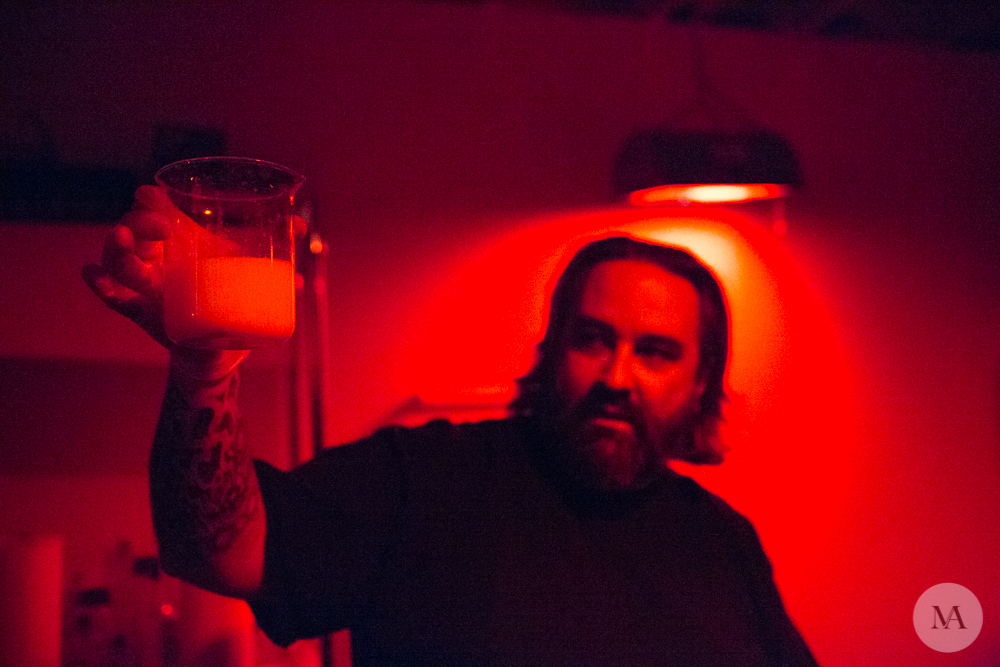 "And that is Collodio-Chloride... let's pour it on some paper and make some prints!"
"And that is Collodio-Chloride... let's pour it on some paper and make some prints!"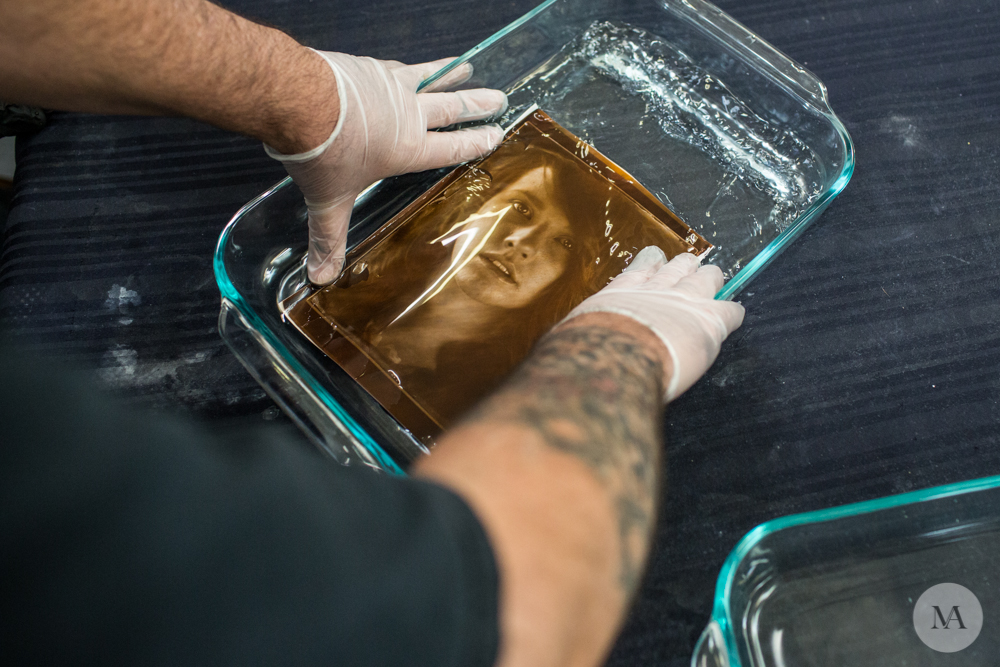 Gold toning Craig's portrait of Kaitlan.
Gold toning Craig's portrait of Kaitlan.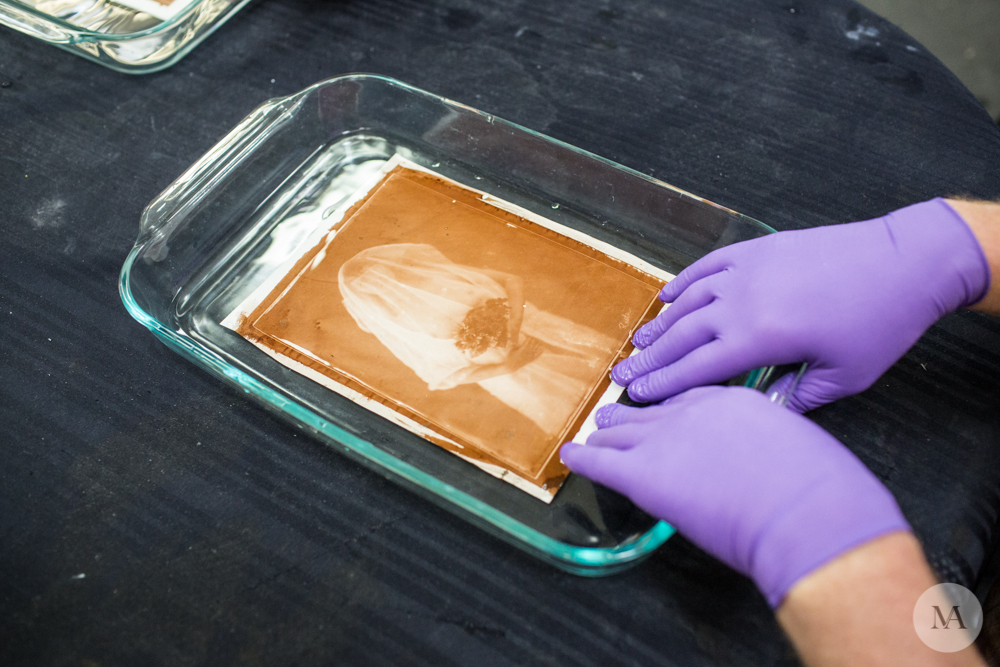 Rustin gold toning a Salt print of Kaitlan.
Rustin gold toning a Salt print of Kaitlan. Euphus and his Bellocq print of Kaitlan (Bellecq's image is on the left for comparison).
Euphus and his Bellocq print of Kaitlan (Bellecq's image is on the left for comparison). Bellecq... er.. Euphus and his print.
Bellecq... er.. Euphus and his print. 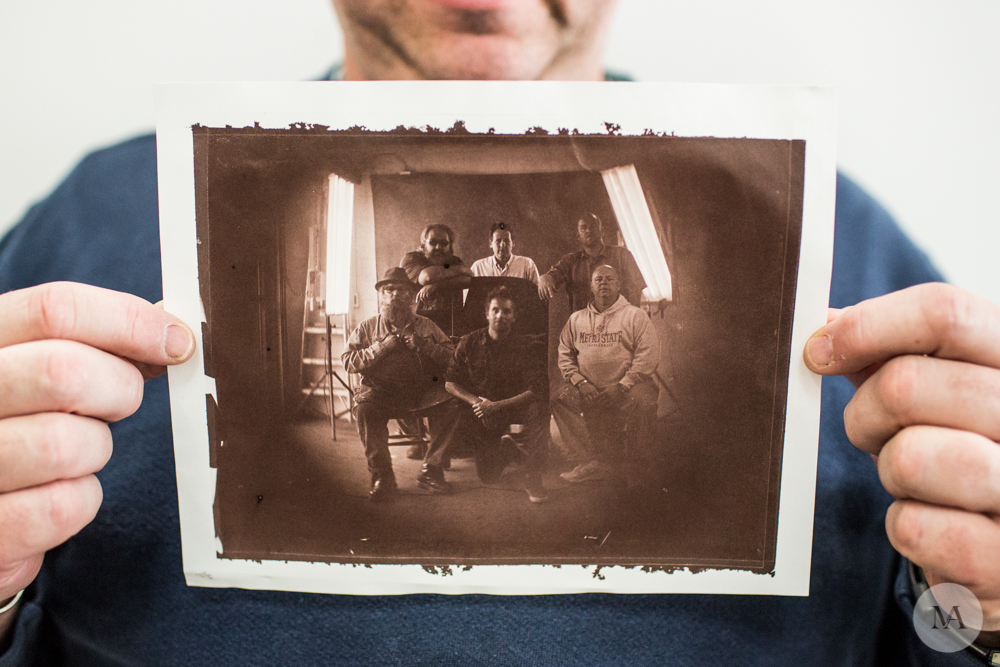 Kevin and his group shot - Whole plate Salt print.
Kevin and his group shot - Whole plate Salt print.  Whole plate Collodio-Chloride print from a wet collodion negative - Euphus Ruth
Whole plate Collodio-Chloride print from a wet collodion negative - Euphus Ruth Quinn Jacobson | Comments Off |
Quinn Jacobson | Comments Off | 







